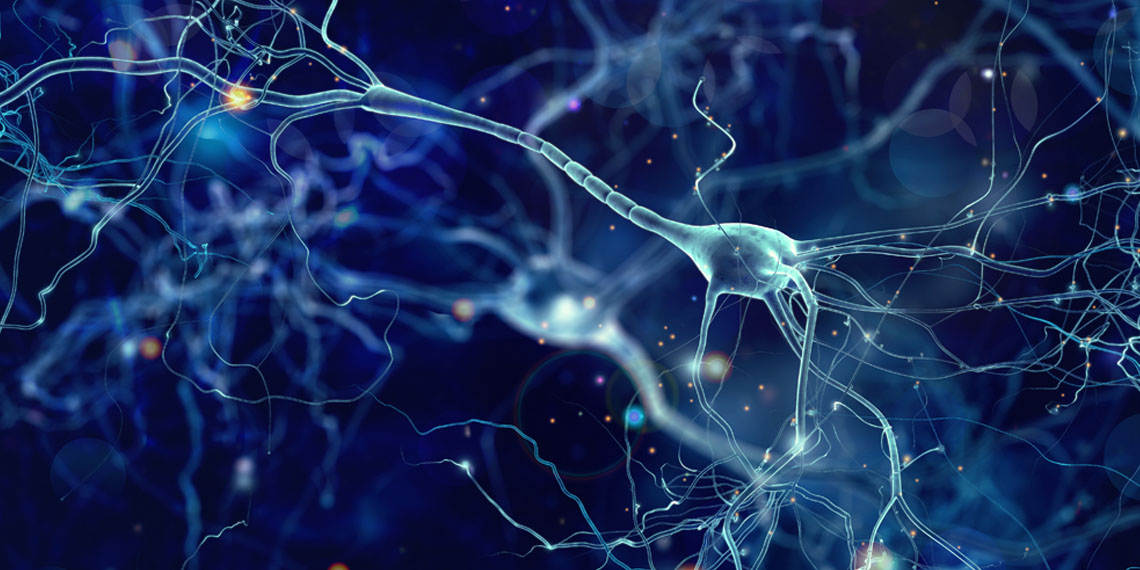New research published in Scientific Reports demonstrated that breathing has an important role in coordinating brain activity in the prefrontal brain network during wakefulness. These findings provide new insights into the relationship between breathing and cognitive processing, and could have important implications for meditative practices that involve controlled breathing.
Previous studies have shown that respiration can have significant effects on brain activity and cognitive processes. For example, changes in breathing patterns have been linked to changes in attention, arousal, and emotional states. The respiratory system also shares nerve pathways and connections with brain areas involved in cognition.
For their new study, the researchers focused on a specific structure called the nucleus reuniens (Reu), which acts as a link between the prefrontal cortex and hippocampus. The researchers wanted to investigate how the synchronization of neural activity, particularly in the frequency range of gamma rhythms, is regulated in this network.
Gamma rhythms are specific patterns of electrical activity in the brain characterized by high-frequency oscillations in the gamma frequency range, typically around 30 to 80 cycles per second (Hz). It is a prominent feature of brain activity and is related to various cognitive processes, including attention, perception, memory and awareness.
“We were intrigued by the idea that breathing can cause brain tissue to constantly switch between a synchronized and an asynchronous state. Synchronization of neural activity is a fundamental brain mechanism that is closely related to cognition, especially when it occurs at gamma frequencies in the prefrontal region,” explained the lead author. Sunny BashaPhD candidate at Laval University and member of the Timofeev Lab.
“It is also known that, during wakefulness, many variants of neural activity originate from the sensations we elicit by our own movements. Breathing is one of the most sensory-stimulating behaviors, from the mechanical and thermal sensations elicited by airflow through the nose, smell, the feeling of chest expansion, chemosensation of fluctuating CO2 and O2 levels and even hearing, which can be stimulated by the sound of airflow. air.”
“Not surprisingly, breathing can drive neural activity in various brain regions as has been demonstrated in a recent wave of research. Understanding how breathing influences brain activity helps us understand fundamental questions related to cognitive experience and the inextricable link between body and mind.”
To carry out their research, the researchers used animal models, specifically cats and mice. They implanted electrodes in various brain regions, including the prefrontal cortex, hippocampus, midline thalamus, and various cortical areas. They recorded the local field potential (LFP) and performed intracellular recordings to measure the electrical activity of individual neurons. The researchers also monitored the animals’ breathing by recording changes in temperature near the nostrils or using piezoelectric sensor strips placed on the animals’ chests.
The researchers found that gamma rhythms play an important role in understanding the relationship between breathing and brain activity. There is coupling or synchronization between the gamma oscillations and the respiratory cycle in certain brain regions, particularly the prefrontal cortex and the midline thalamus. This means that the gamma oscillations in this region are modulated or influenced by the respiratory cycle, with certain phases of the oscillations synchronizing with different respiratory phases.
“The main takeaway from our research is that breathing is the primary pacemaker in the cognitive areas of the brain during wakefulness,” Basha told PsyPost. During exhalation, the prefrontal region goes into gamma oscillations and is synchronized with reunion nuclei of the thalamus, an area that acts as an important link between the prefrontal cortex and the hippocampus.
“By facilitating remote coordination across these cognitive networks, the respiratory cycle can enforce a specific time window that drives cognitive processing. This may explain how breathing exercises or conscious control of breathing in meditation can modulate cognitive and emotional states.”
Interestingly, the synchronization between breathing and brain activity was mainly observed during wakefulness, suggesting that it is specifically related to wakefulness during wakefulness.
“As the animal starts to sleep, we observe that the gamma oscillations dissociate from the respiratory cycle and become associated with internal spindle-like sleep oscillations,” explained Basha. “We found this observation very surprising because breathing continues to be regular even during sleep. This suggests that there is an as yet undiscovered process that controls the coupling of gamma oscillations with waking breathing.”
The researchers are also exploring where the signals associated with breathing in the brain come from. They suggest that a part of the brain called the entorhinal cortex, which receives input from the olfactory (smell) system, may be involved in generating signals related to breathing.
“One of our findings is that breathing activates synaptic activity in the nuclei reuniens of the thalamus,” Basha told PsyPost. “However, it is unclear what input to the thalamus drives this synaptic activity. As any student of neuroscience knows, the only sensory structure that does not project to the thalamus is the olfactory system, indicating that alternative pathways communicate the respiratory cycle to the thalamus.
“Second, we studied waking behavior in peacefully resting animals and we did not study how gamma oscillations change as the respiratory rate increases during active waking behaviors such as exploration. To this question, we invite readers to read two outstanding studies that comprehensively look at the relationship between wakefulness and brain activity: Karalis and Sirota, 2022 Nature Communications and Girin et al. Scientific Reports 2021.”
“The brain is constantly monitoring the sensations that we cause through our own behavior,” says Basha. “With every breath you take, every move you make, every bond you break, the brain is watching you 🎶 😊.”
The study, “Respiration regulates gamma synchronization in the prefronto-thalamic network“, was authored by Diellor Basha, Sylvain Chauvette, Maxim Sheroziya, and Igor Timofeev.
#Breathing #helps #synchronize #neural #activity #cognitive #areas #brain #awake #studies
